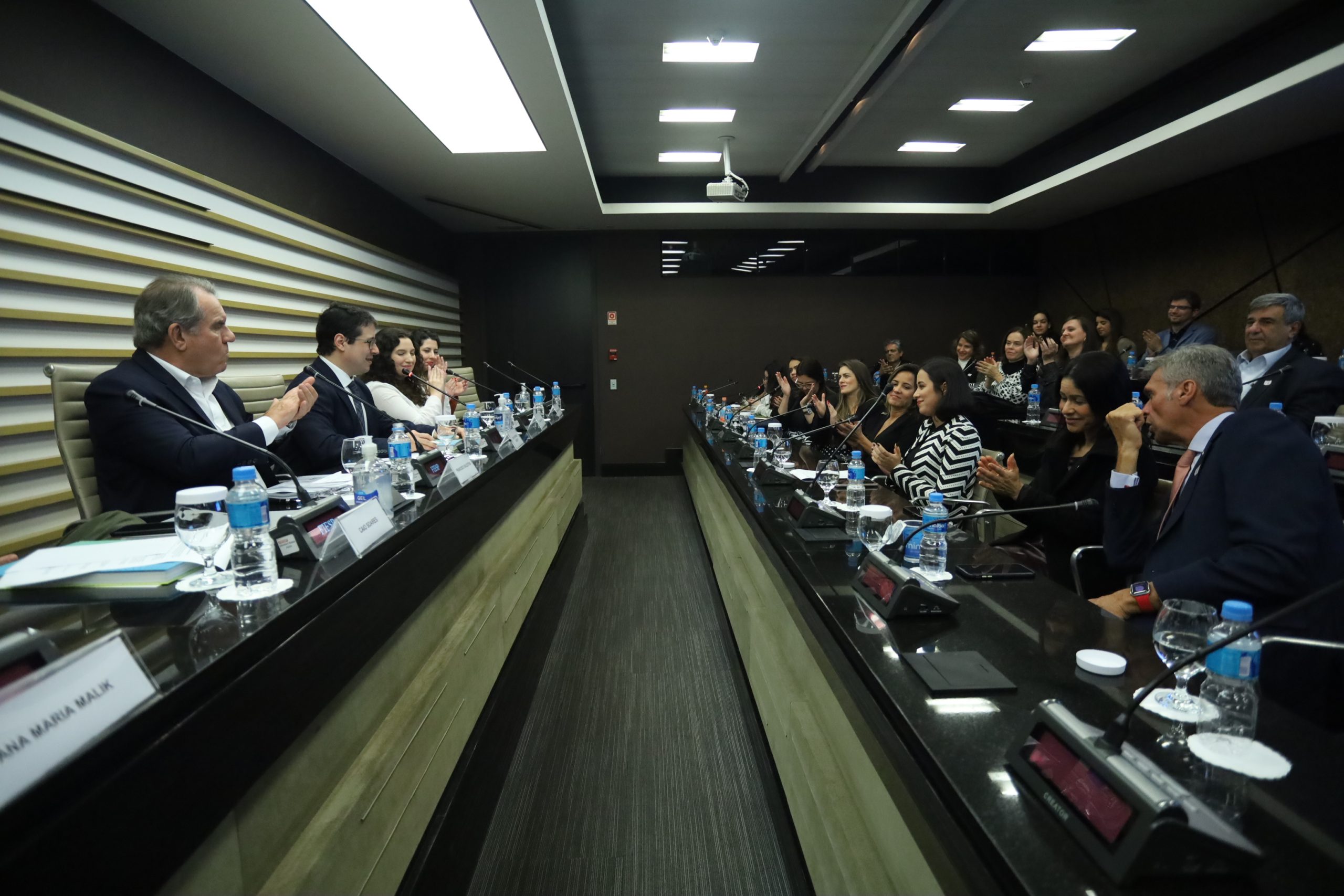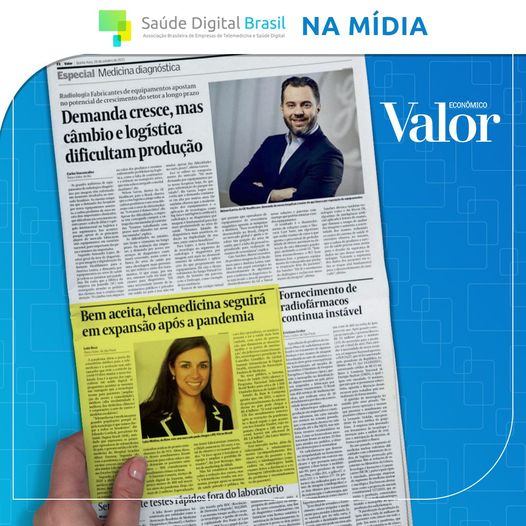Saúde Digital Brasil brought together leaders from the health sector to present the work, which brings together the main guidelines that guide the practice of telemedicine and telehealth
The Brazilian Association of Telemedicine and Digital Health Companies (Saúde Digital Brasil) brought together associates and healthcare leaders to present the first edition of the Telemedicine and Telehealth Good Practices Manual. The event took place in the FIESP auditorium in São Paulo last Thursday. In addition to the presentation of the work, which is the first of its kind in Brazil and Latin America, the event featured a round table, which addressed the importance of good practices for everyone involved in the sector and was attended by Professor Ana Maria Malik, Dr. Daniel Neves and Dr. Beatriz de Faria Leão.
Francisco Balestrin, deputy director of the FIESP Health and Biotechnology Production Chain Committee (ComSaude), welcomed the guests and highlighted that “ComSaude works on several fronts and we always seek to bring up topics that contribute to the growth of the sector. Therefore, it is an honor for us to have this material launched here. Telemedicine is one of the main tools in healthcare in the world and in Brazil. It is a way to expand access that, if done safely and professionally, will contribute significantly to the sector, benefiting society as a whole. May this manual be an important milestone in the growth and consolidation of telemedicine and telehealth in our country.”
The Good Practices Manual will be an important tool to guide the quality of telehealth services provided in the country. According to Dr. Caio Soares, president of Saúde Digital Brasil and editor of the work, there are many initiatives and professionals practicing telemedicine. This leads to the importance of defining minimum legal and technical requirements to improve the system and enhance the quality of access. “Telehealth – and also those who work with it – faced a lot of resistance before the pandemic. And one of the greatest real and practical benefits that we have seen in the health area in recent times was the acceptance and breaking down of barriers to telemedicine. The legal advances and, now, legal certainty, the Federal Council of Medicine, the Ministry of Health and the law, finally consolidated, are important achievements. One of the ways we found to repay this receptiveness to society was to create this material, which is the result of the work of many people”.
The four chapters of the Manual, prepared by the Association's Working Groups, which included the participation of the main leaders and authorities on each of the topics in Brazil, were presented during the event.
Direct-to-patient telemedicine
Dr. Carlos Henrique Pedrotti, from Hospital Israelita Albert Einstein, vice president of Saúde Digital Brasil, editor of the Manual and coordinator of the chapter on Direct Telemedicine to the Patient, emphasized the importance of health professionals always being aware of the limits of technology and, in the case of telemedicine, the need to observe patient and information safety. According to the professional, the main objective of both the manual and the chapter he coordinated was to address the limits of providing health services through remote communication tools and the ethical aspects that must be respected.
“We begin by comparing telemedicine care to the fact that it must follow the same ethical principles as in-person care, in all aspects and with the greatest possible care. The doctor-patient relationship must always be prioritized, and it is perfectly possible for it to occur remotely,” he emphasizes.
The practice of direct telemedicine with the patient is divided into three modalities in the work: asynchronous communication, telephone communication and videoconferencing. The parameters for performing the physical examination of the patient via teleconsultation are also covered in the work. The chapter coordinated by Dr. Pedrotti also addresses telepropaedeutics, covering the techniques, maneuvers and devices that allow clinical examination via telemedicine.
Electronic prescription and digital dispensing record
Marina Jacob, Head of Legal & Policy at Memed and coordinator of the chapter on Electronic Prescription and Digital Dispensing Records, explained that the chapter brings the most up-to-date information on the topics and highlighted that three pillars were considered in its preparation. The first pillar is the document and all the requirements related to it, such as signature and certification; the second pillar was the healthcare professionals involved in the process, mainly the prescriber and those who dispense medications; and the last pillar was the patient themselves. The chapter also addresses ethical and compliance issues that must be followed by digital prescription providers.
“Having followed all this sectoral development and seeing all these things that we believe to be good practices consolidated in this material is a great joy, both from the business side and from the sectoral side. I have no doubt that this material will be very useful for the next regulators, for the legislation for everything that comes from now on now that we are certain that telehealth has only just begun”, pointed out Marina Jacob.
Interoperability
The topic of interoperability, of great importance in the digital health scenario, also gained a chapter in the Manual of Good Practices for Telemedicine and Telehealth. Fernanda Moura Leite – Head of Products – Data Platform, Interoperability & Relationship at Grupo Dasa and coordinator of the chapter on the topic, highlighted that it is a subject with few references benchmarking. Therefore, it is even more necessary for technology and data to be structured to ensure better care and provide a better experience for doctors and professionals in the field.
The Coordinator highlighted that the chapter contains general concepts and guidelines for implementing best practices in health data interoperability, including informational aspects such as minimum data models, minimum information models and data standards.
“It was a challenge to coordinate this working group on such a complex topic and to also present this topic in a light-hearted manner, from the concept of what interoperability is to the guidelines, showing how necessary it is to advance in terms of digital health. We took great care not to bring only a technological vision to the project, but to serve as a guide for many who face the challenge of implementing interoperability projects. Doing this in its entirety, with all the technological and informational challenges, is complex. We need to know how to think about how to break this big problem down into smaller problems, delivering value to professionals and patients,” he emphasizes.
Important points about information security, data privacy and relevant debates of the moment were also highlighted, with the open health and data portability. The last point highlighted was that the topic should not be seen as an exclusively technology project, but rather as a multidisciplinary construction, which requires technological and process changes.
Information security
Carlos Pedrotti emphasized that information security in telehealth and telemedicine, more than a moral and ethical issue, is related to legal implications and that the topic was addressed in the Manual in the chapter coordinated by Victor Prata, Data Protection, Compliance and Regulatory Coordinator at Conexa. The chapter addresses good practices on information security, personal data protection and privacy. The goal is to demystify the topics and present them in a simple and palatable way to those who are not familiar with the topics and also to players in the public and private health sectors, so that they can build their digital health activities based on the best information security practices in force in the market.





